Buddhist Grottoes in China
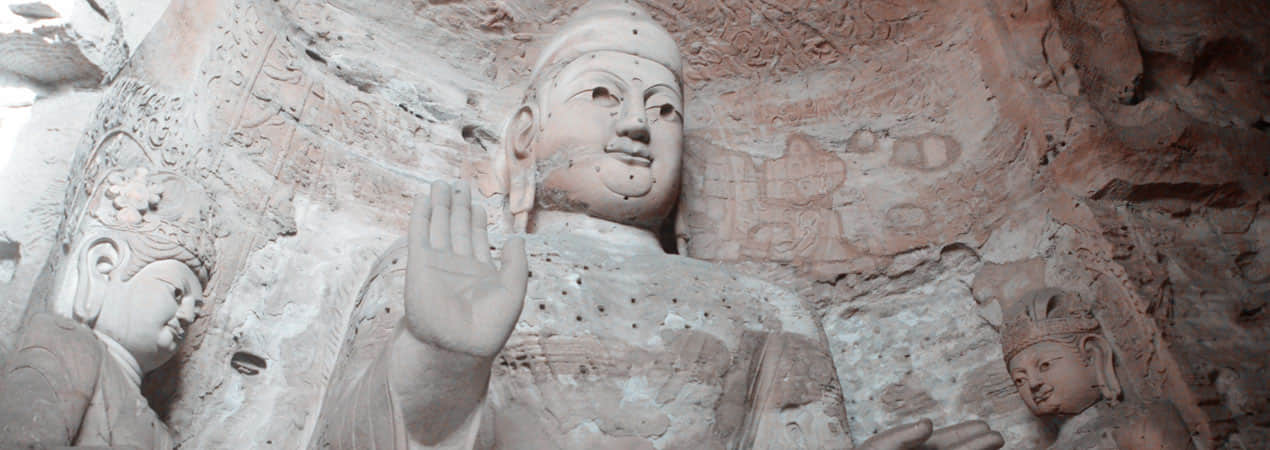
Buddhism has had a profound effect on China ever since it made its way from northern India into China during the Han dynasty around the first century CE. Buddhism teachings arrived in China along the Silk Road in the west of China, resulting in many renown grottoes dotted along this famous commercial route. Buddhism initially gained popularity among the north-western tribes in the 3rd century CE; during the 4th to 6th century, it was adopted as the imperial religion by the northern emperors of China. Both royal families and commoners all made donations to build grottoes and temples during that period. The second construction of grottoes was during the Tang Dynasty from 7 to 9th century CE when the empire prospered during a stable rule. Thanks to their enormous efforts creating these, we are now left with these impressive worlds of wonders in sculptures and murals. We can learn a lot about this ancient culture through these relics. Today many grottoes are listed as UNESCO World Heritage Sites.
1. What are the Buddhist grottoes? And what can you find inside the grottoes?
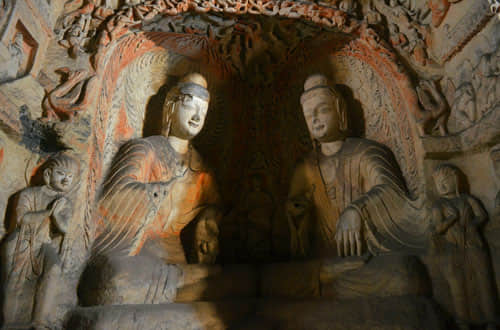
Buddhist grottoes are caves dug out from the hillside. They are also known as cave temples. Initially, they were used by Buddhist monks as places of worship and meditation. Over the years, many Buddhist caves became the focus of worship and meditation not only for the communities of monks who would reside there but also for visiting pilgrims and traders. During the 4th -6th century, Buddhism became the national religion of China and received generous donations from the rich.
In the grottoes, you will find the preservation of sculptures and murals dedicated to Buddha. The sculptures are all in the image of Buddha of different postures and murals are mainly about Buddha's life and visions of the afterlife. One of the caves, the Mogao Caves in Dunhuang, is known as the library cave and was discovered in 1900, with an estimated 40,000 manuscripts, scrolls, booklets, and paintings on silk, hemp and paper were found.
2. The origin of Grottoes
Since early civilization, humans have felt compelled to raise structures to their gods. Caves have always been seen as mysterious and spiritual. They are a gateway to the underworld; a portal into the very earth itself. Many cultures believe that creatures lived in caves. In India, caves have long been regarded as sacred places. Caves that were enlarged or entirely man-made were believed to be as sacred as natural caves.
The practice of excavating clusters of rooms or niches into the sides of cliffs and mountains to create cave temples originated in India and spread with Buddhism via Central Asia onto China. During the time of the Buddha (around 4 century BCE), Buddhist monks were already in the habit of using natural caves, such as the Saptaparni Cave, southwest from Rajgir, Bihar in eastern India. Many believe it to be the site in which Buddha spent some time before his death, and where the first Buddhist council was held after Buddha died (enter Nirvana). Buddha himself had also used the Indrasala Cave for meditation, starting a tradition of using caves, natural or man-made, for religious. According to early texts, rudimentary caves were used as dwellings and were transformed over time into spaces with clear elements of architectural design.
Why did they choose to build cave temples in India? The main reasons were poverty, lack of building materials, and weather elements, therefore they sought alternative methods for temple buildings.
3. Why ancient emperors donated toward Buddhist caves construction?
Cave-temple building was an expensive enterprise, made possible through sponsorships made by emperors and great families. For most emperors, they adopted Buddhist beliefs, and donated to Buddhist caves helped justified their rule.
The Northern Wei rulers were ardent supporters of Buddhism, a foreign religion utilized as a theocratic power for ideological and social control of the predominantly Chinese population.
Empress Wu Zetian of the Tang Dynasty ruled as China’s only female emperor. In promoting Buddhism over Confucianism and Daoism as the favored state religion, the Empress encountered strongly held Confucian beliefs against the female rule. To justify her rule, Wu used selected Buddhist scriptures and led the way in the creation of numerous visual representations o Buddha. The most spectacular is the stone temples and statues chiseled into grottoes at Longmen, near her capital. In the largest cave, there is a statue called the Grand Vairocana Buddha. Carved in limestone, the colossal statue is reputed to have been carved in Wu’s likeness.
4. How grottoes were built?
First, finding the right location. Buddhist cave sites were often chosen for their scenic beauty, sometimes by monks who had seen Buddhist visions at a particular spot or were entranced by a spiritual aura of the sites.
There are two kinds of cave temples:
The first is by cutting through a vertical cliff and carve a statue, then construct a wooden structure to protect it. They use a vertical excavation technique, meaning that the builders started at the top of the original boulder and made their way downwards, then build a wooden structure to house the statues. (As shown in the pictures below).
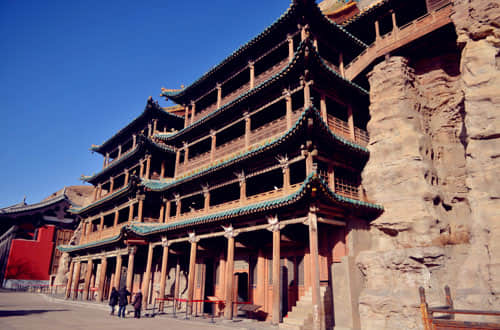
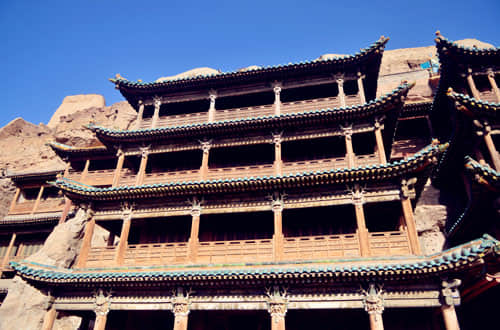
The second kind is by cutting out a cave and carving a statue inside. They will cut the ceiling then down to the ground. They will reserve a place on the wall for the statue (as shown in the pictures below):
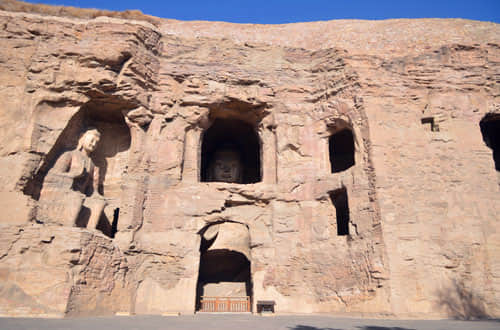
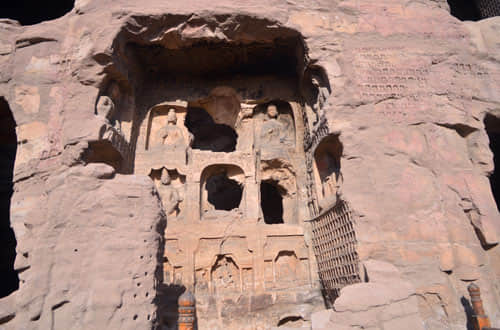
5. What are the top five Buddhist Grottoes in China? Comparison of the top five grottoes
The top 5 Buddhist grottoes in China are Mogao Caves in Dunhuang, Yungang Grottoes in Datong, The Longmen Grottoes in Luoyang, The Maijishan Grottoes in Tianshui and Dazu Rock Carvings in Chongqing in southwestern China.
| Name | Initial Time of construction | Mainly supported by | Features |
|---|---|---|---|
| Mogao Caves | 336 CE | Royal family of Northern Wei, Western Wei and Northern Zhou | Clay sculptures and murals |
| Yungang Grottoes | 460CE | Royal family of Northern Wei | Stone sculptures |
| Longmen Grottoes | 494CE | Royal family of Northern Wei and Tang dynasty | Stone sculptures and calligraphy |
| Maijishan Grottoes | 384 CE | Royal family of Later Qin and Northern Wei | Clay sculptures |
| Dazu Rock Carvings (Here refers to Baodingshan) | 1174 CE | Donations collected by monk Zhao Zhifeng | Co-existence of Buddhism, Taoism and Confucianism statues |
6. Other Buddhist Grottoes worthy of visiting in China
Besides the top 5 grottoes, there are many smaller grottoes in China. The following are recommended if you are in the area:
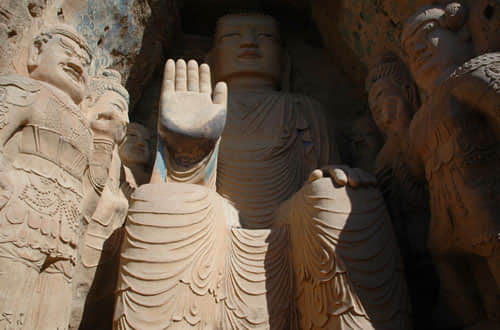
Tiantishan Caves
Located at Wuwei County on the Silk Road. It was constructed between 412 and 439 CE. Tianti means "ladder to the sky" and shan means mountain. The site is a honeycomb of 17 caves in three layers. The biggest cavern is 30 meters high, 19 meters wide and 16 meters deep. It houses a Sakyamuni statue that is 15 meters high and 10 meters wide, there are smaller peripheral caves, and murals. Experts have collected some of the site's relics for restoration. The local government built a 10-meter-high dam to protect the caves from water damage.
Yulin Caves
located 160km from Dunhuang. It takes its name from the eponymous elm trees lining the Yulin River, which flows through the site and separates the two cliffs from which the caves have been excavated. The forty-two caves house some 250 polychrome statues and 4,200 meters of walled paintings, dating from the Tang Dynasty to the Yuan Dynasty (7th to 14th centuries). The site was among the first to be designated for protection in 1961 as a Major National Historical and Cultural Site.
Tianlongshan Caves
Located 40km southwest of the city of Taiyuan in central Shanxi Province. The caves of the Tianlongshan mountain range (also known as the Mountain of the Heavenly Dragon), form a famous Buddhist grotto complex that was active from the Eastern Wei (534–550 CE) and the Northern Qi (550–577 CE) dynasties through to the Tang era (618–907 CE). The complex spans two mountains, with eight caves on the eastern mountain and 13 caves on the western mountain. These caves contain Buddhist art of historical importance, from sculptures and carvings of Buddha, bodhisattvas, and other divinities. However, the statues were badly damaged in the early 20th century; many of the statue heads were sold overseas.
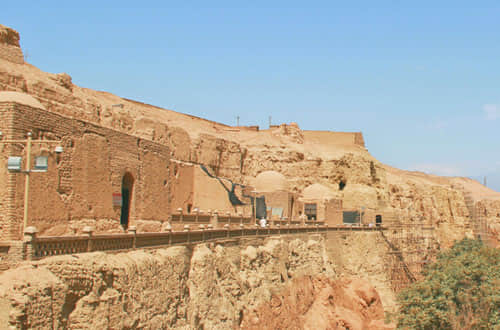
Kizil Caves
The Kizil Cave is believed to be the earliest major Buddhist cave complex in China, and is located in Baicheng County, Xinjiang western China. The development of this cave complex is said to have occurred between the 3rd and 8th centuries CE. under the ancient Tocharian kingdom of Kucha. There are 236 known cave temples carved into the cliff from east to west, spanning a length of 2 kilometers (1.2 miles). Of these, around 135 are still relatively intact.
Xumishan Grottoes
Located in Guyuan, Ningxia Hui Autonomous Region in western China ."Xumishan" is a Chinese-language version of "Mount Sumeru," the Sanskrit term for Buddhism's cosmic mountain at the center of the universe. The construction of the 162 grottoes spans five dynastic eras, from the Northern Wei (386-534 CE) to the Tang (618-907 CE). There are about 1000 statues left. The highlights are a 20.6 meters (67 ft) Tang dynasty seated Buddha, the Maitreya Buddha, or the Buddha of the future.
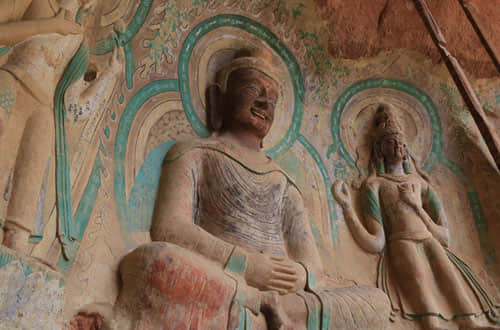
Binglingsi Caves
Binglisi caves also known as Thousand Buddha Caves (Qian Fodong), located about 80 kilometers from Lanzhou, near Liujiaxia town. According to an inscription found inside one of the caves, the first construction dates back to 420 C E, namely the time when China was living through a tormented period of division and wars. There are 216 grotto shrines, 815 figures of Buddha, and a 1,000 square meters mural. The giant Maitreya Buddha in the cave stands more than 27 meters tall. In June 2014, it was inscribed into the World Heritage List as part of the series of sites under “Silk Roads: The Routes Network of Chang’an-Tianshan Corridor”.
Xiangtangshan caves
Located in Handan, Hebei province northern China. Carved into the Xiangtangshan (or Xiangtang Mountains), they were the crowning cultural achievement of the Northern Qi dynasty (550–577 CE). Once home to a magnificent array of sculptures—monumental Buddhas, divine attendant figures, and crouching monsters framed by floral motifs—the limestone caves were severely damaged in the first half of the 20th century, when their contents were chiseled away and offered for sale on the international art market. There are still 16 caves and 5000 statues of different sizes left. There are two parts, the northern section, which is protected, and the southern section.
Tailor-made China's Buddhist Gottoes Tour
Don't miss out on the chance to witness these world-renowned treasures. Plan your trip to China's Buddhist grottoes now!

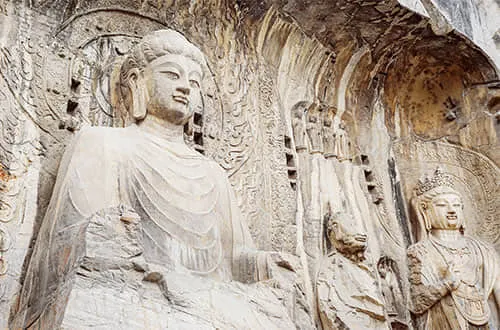 China World Heritage Discovery
China World Heritage Discovery 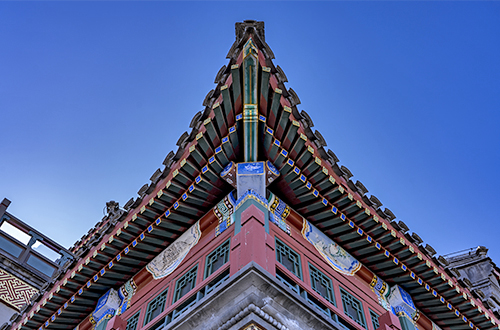 Chinese Architecture
Chinese Architecture 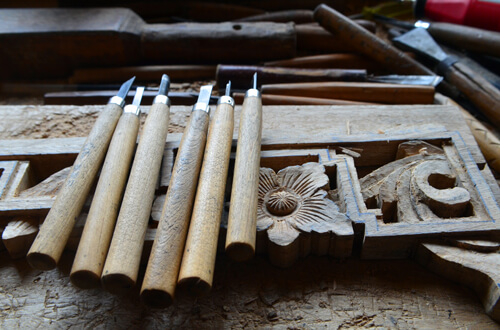 Chinese Woodcarving Art
Chinese Woodcarving Art 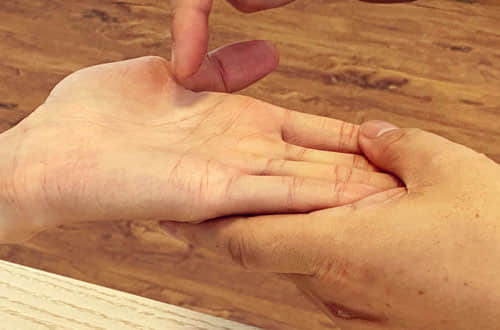 How Chinese Palmistry Works
How Chinese Palmistry Works